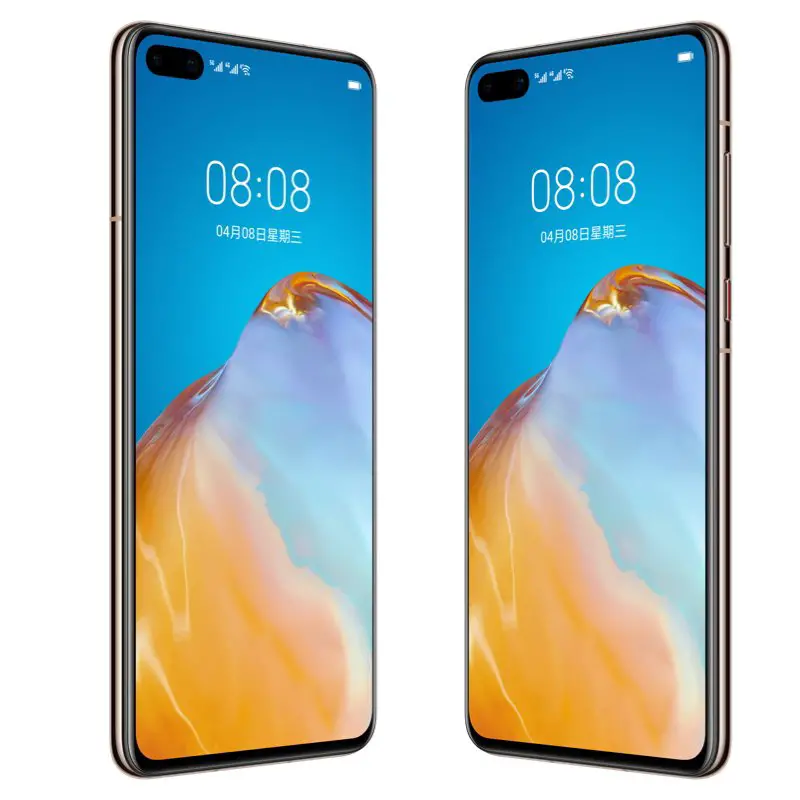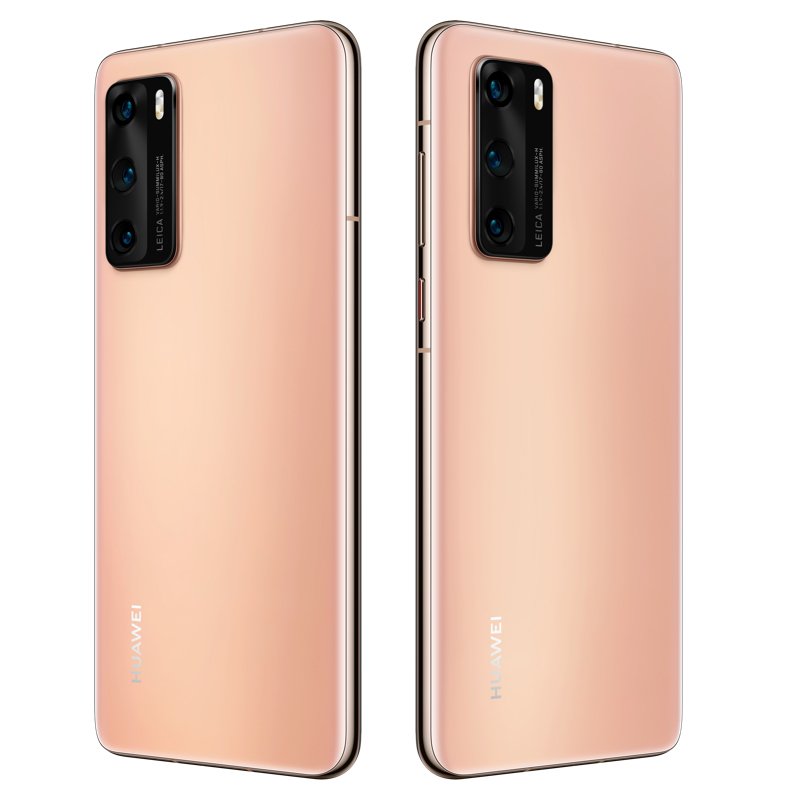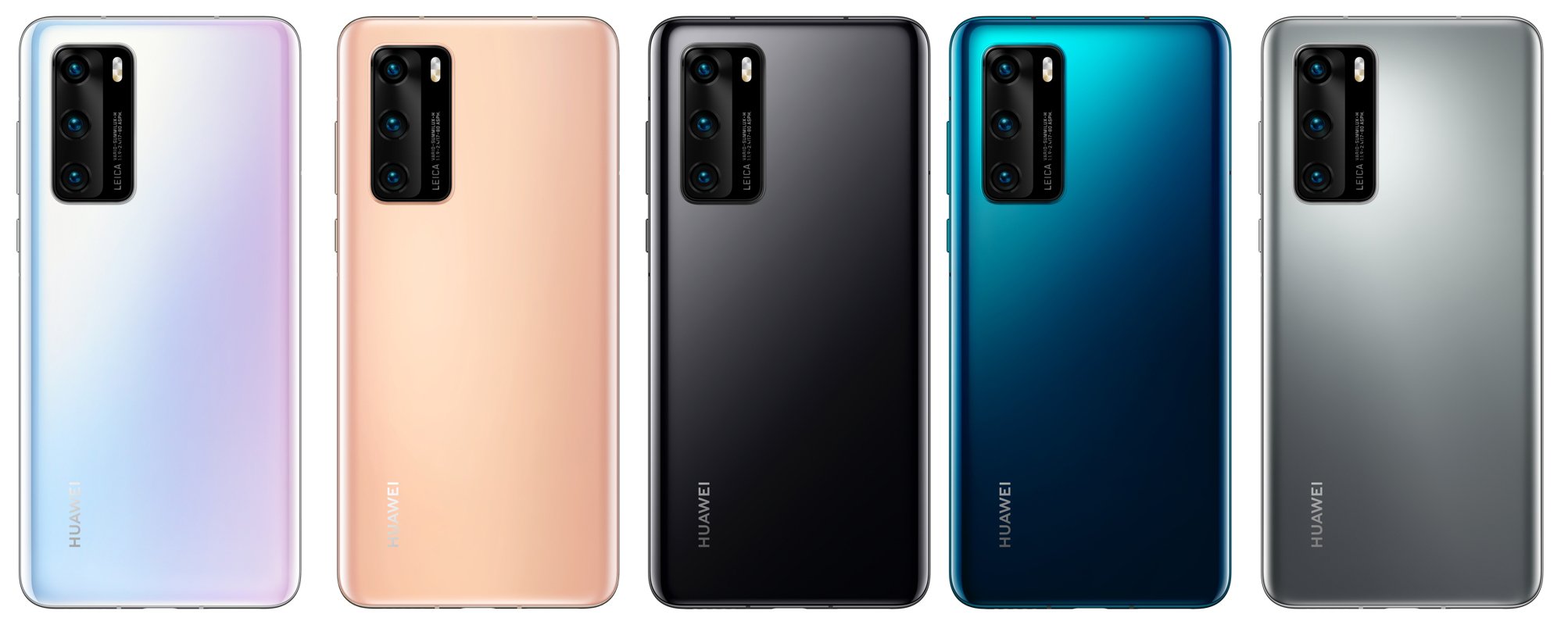Huawei P40 Specifications

- Release date: 2020, March 26
- Colors: Silver Frost, Blush Gold, Deep Sea Blue, Ice White, Black
- Dimensions: 148.9 x 71.1 x 8.5 mm.
- Weight: 175 g.
- Screen: 6.1" in, 1080 x 2340, OLED
- Camera : Triple, 50MP
- Chipset: HiSilicon Kirin 990 5G (7 nm+)
- CPU: Octa-core (2x2.86 GHz Cortex-A76 & 2x2.36 GHz Cortex-A76 & 4x1.95 GHz Cortex-A55)
- Memory: 128GB 6GB RAM, 128GB 8GB RAM, 256GB 8GB RAM
- Battery: 3800, Non-removable Li-Po
- Network: GSM / HSPA / LTE / 5G
- Operating system: Android 10.0 (AOSP + HMS); EMUI 10.1
- Sensors: Infrared face recognition, fingerprint (under display, optical), accelerometer, gyro, proximity, compass
If you are curious to find out all the details before reading the full review, visit the page for Huawei P40 Specs, where you will find even the smallest detail about the phone.
- Specifications
- Huawei's flagship P-series is one of the most popular worldwide. The devices have been winning more and more fans for a generation now, and there's a reason why. The models are excellent camera phones with maximum performance. Although Google services are absent in the Huawei P40, the latter can be compensated by downloading identical ones from Huawei's own App Gallery store.
- Design
- Display
- Performance
- Cameras
- Conclusion
Huawei's flagship P-series is one of the most popular worldwide. The devices have been winning more and more fans for a generation now, and there's a reason why. The models are excellent camera phones with maximum performance. Although Google services are absent in the Huawei P40, the latter can be compensated by downloading identical ones from Huawei's own App Gallery store.

Design

In 2020, Huawei's designers have gone with the recently popular massive black rectangle that houses the main camera unit. We see a similar solution here. However, that's not all. Now the front cameras are cut into the screen. Forget about the 2019 "drop".
The housing of the Huawei P40 is executed according to a scheme - glass, metal, glass. The device weighs only 175 grams - just a little heavier than its predecessor, but lighter than most other smartphones in this price category. Thanks to the ergonomic design, the device fits well in the palm. Due to its relatively compact size, it is suitable even for people with smaller hands. Its dimensions are 148.9 x 71.1 x 8.5 mm.
The P40 version features splash protection to IP53 standard. In comparison, the P40 Pro is IP68 certified.
Display

The Huawei P40 impresses with a comfortably large 6.1-inch panel with a resolution of 1080 x 2340 pixels. The matrix is implemented OLED technology and is capable of 90 Hz picture refresh. An optical fingerprint scanner is embedded in the screen, which Huawei assures now works three times faster and the scanning area is also three times larger.
The display brightness of the Huawei P40 is slightly lower compared to that of the flagship models of OnePlus and Samsung, which negatively affects the readability of the screen when working with the phone under the open sky. At the same time, the picture is superb - juicy colors, clear picture.
Color temperature can be adjusted manually, but ready-made modes are also provided: Warm, Cool and Standard.
Performance

At the heart of the Huawei P40 is Huawei's highest-performing chipset for the first half of 2019. It's the HiSilicon Kirin 990 5G. The 8-core processor provides support for 5th-generation mobile network operation.
According to experts, the manufacturer has shown stinginess and provided only 8 GB of RAM and 128 GB of permanent memory. There is an option to insert a memory card, but it is in the exotic NM format. Depending on the distribution market, Huawei P40 can be supported single or dual SIM card operation.
We should mention the presence of a flagship set - Wi-Fi 6 and Bluetooth 5.1, infrared port for controlling household appliances, NFC chip for contactless payments, etc. Huawei P40 runs Android 10 operating system with EMUI 10.1 interface.
Cameras

If you're a fan of the brand, then you know that the P-series is among those recognized as a leader in mobile photography. The Huawei P40 is a continuation of that tradition. It's got a three-sensor main camera with 50 MP (f/1.9, optical stabilization), 16 MP (ultra-wide-angle lens, f/2.2) and 8 MP (telephoto, triple optical zoom, optical stabilization, f/2.4) sensors.
The main 50 MP module is implemented using Quad Bayer technology. Here, four "small" pixels can be merged into a 12.5 MP image. The sensor size has been increased to 1/1.28 inch. This means that in insufficient light, the smartphone will do even better.
The sharpness of the photos is high. Auto mode successfully recognizes scenes in most cases. In short, the camera is versatile, providing high quality in both panoramic and macro shots. In insufficient light, the photos are detailed.
The front camera of the Huawei P40 is dual. If with the 32-megapixel selfie sensor (f/2.0), capable of recording 4K video, everything is clear, the use of IR TOF 3D arouses more interest. In addition to blurring the background, it acts as an IR sensor for reliable face unlocking even in complete darkness. The front camera is equipped with autofocus.
In the smartphone, we notice an interesting mode - Best Photo. This feature takes several photos before and after the shutter is released. It then provides the user with a choice of several shots. This mode is already familiar to us in the iPhone 11 Pro and Galaxy S20 series.
Another valuable feature is Audio Zoom. It zooms in not only on the image, but also on the sound source.
Video recording is supported at a maximum of 4K at 60 frames per second. In such a mode, most effects are unavailable. Zoom during recording is digital only.
The manufacturer assures that users can now count on higher quality videos. The excellent results are due to improved algorithms in the work of artificial intelligence.
Autonomous operation
The battery of the compact Huawei P40 has a capacity of 3800 mAh. The smartphone has received 22.5W fast charging technology, but not wireless or reversible.
At an average level of workload, you can expect two days of autonomous work from the Huawei P40 battery. Recharging the battery to 100% takes just 2 hours. These figures are not record-breaking by today's standard, but are worthy of a phone in this class.
Conclusion
The Huawei P40 is without a doubt a powerful flagship phone that will delight users with an excellent camera, decent autonomous performance and fast Wi-Fi. The manufacturer has chosen for it the most simple and relaxed design approach. The device is available in three colors, with the golden one making the strongest impression. The grey and black in turn look restrained.
The Huawei P40's glass back is coated in gloss and curves on all four sides, flowing seamlessly into the frame. Thanks to this construction, the smartphone looks superb. Any user with a taste for luxury will be happy to have this particular model by their side.
The main drawback of the Huawei P40 is the absence of the Google Play store. This means that the usual and convenient apps that many are used to will be absent. In the App Gallery you will find some of them. You can seamlessly download apps from other sources. Huawei has tried to solve the problem by providing built-in app search in the smartphone.
Pros:
- High performance;
- Excellent photos;
- Good zoom;
- Quality microphone;
- Excellent autonomy;
- Quality sound;
- Fast Wi-Fi;
- 5G and eSIM support;
- Face recognition with infrared camera.
Cons:
- Only digital zoom is available when shooting video;
- Google services are absent;
- Memory card is NM format;
- Wireless charging is absent.
Huawei P40 video review
Disclaimer: The information presented in this article is based on our team's personal experience with the Huawei P40 and third-party sources. While every effort has been made to provide accurate and reliable information, readers should keep in mind that this is a subjective assessment. The writing of this article was not paid for or sponsored by Huawei.

